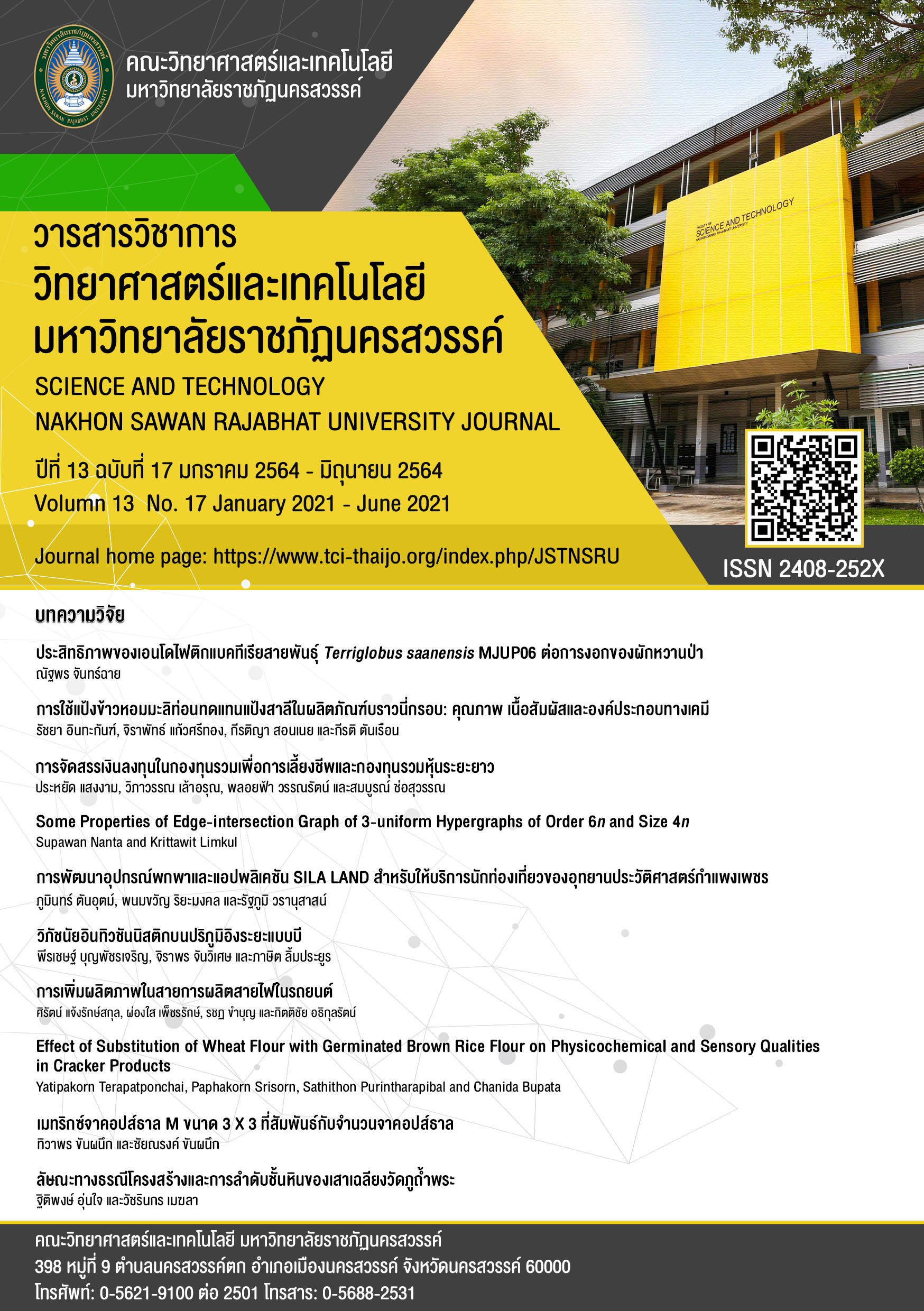ลักษณะทางธรณีโครงสร้างและการลำดับชั้นหินของเสาเฉลียงวัดภูถ้ำพระ
Keywords:
geological structure, rock formation, Phu Phan formation, early CretaceousAbstract
The objective of this research is to study the structural geology of Phu Tham Phra temple rock pillar by the particle size distribution and color of each layer to determine the rock formation and identify the rock category of the pillar. The results of the research were shown as follows: structural geology of Phu Tham Phra temple rock pillar appears four structural geological features, which are like the bedding, cross bedding at tower and top components and found joint – plane, current ripple at base and its surrounded. The rock color consists of light orange, yellowish brown, and red brown. By comparing the observed data with Geological Map of Yasothon province, it can be concluded that Phu Tham Phra temple rock pillar is classified in the Phu Phan formation, Korat Group category, in the early Cretaceous period.
References
ชาญณรงค์ ศรีสุวรรณ. บรรณาธิการ. (2558). พุทธสถาปัตยกรรม. เชียงใหม่: ห้างหุ้นส่วนจํากัดภัทระพรี เพลส.
ปัญญา จารุศิริ, สัน อัศวพัชร, สุวภาคย์ อิ่มสมุทร, กิตติ ขาววิเศษ, สันติ ภัยหลบลี้. (2545). ธรณีวิทยาเอเชียตะวันออกเฉียงใต้. กรุงเทพฯ: จุฬาลงกรมหาวิทยาลัย.
เพียงตา สาตรักษ์. (2551). หลักและวิธีสำรวจ: ธรณีวิทยาภาคสนาม. (พิมพ์ครั้งที่2). ขอนแก่น: ภาควิชาเทคโนโลยีธรณี คณะเทคโนโลยี มหาวิทยาลัยขอนแก่น.
เพียงตา สาตรักษ์. (2559). ธรณีวิทยาโครงสร้าง. (พิมพ์ครั้งที่ 4). ขอนแก่น: ภาควิชาเทคโนโลยีธรณี คณะเทคโนโลยี มหาวิทยาลัยขอนแก่น.
อภิชัย นวเจริญพันธ์. (2550). แหล่งท่องเที่ยวทางธรณีวิทยา. กรุงเทพฯ: กรมทรัพยากรธรณี.
Albert H. Munsell, (2018). Munsell Rock Color Chart. New Jersey: Munsell Co. Ltd.
Florina, P. & Merita, D. (2019). Geotourism potential of Zall Gjoçaj national park and the area nearby. International Journal of Geoheritage and Parks, 7, 103-110.
Gates, D.J. & Westcott, M. (2000). Generating a rock breakage process from sieve data. Minerals Engineering, 13, 1603-1614.
Jacek Szczygie, Wojciech Wróblewski, Maciej Jan Mendecki, Helena Hercman. & Pavel Bosák. (2020). Soft-sediment deformation structures in cave deposits and their possible causes (Kalacka Cave, Tatra Mts., Poland). Journal of Structural Geology. 140, https://doi.org/10.1016/j.jsg.2020.104161
Mao-sheng, GaoGuo-hua, HouXian-zhang. & DangXue-yong Huang, (2020). Sediment distribution characteristics and environment evolution within 100 years inwestern Laizhou Bay, Bohai Sea, China. China Geology. 3, 445-454.
Maurice, B. & Mark, C. (1989). Tectono-sedimentary ripples in devonian shallow marine siliciclastic sediments, southern Ireland. Sedimentary Geology, 63, 1-20.
Neil, W., Marylynn, K. & Scott, S. (2002). Quantitative evaluation of color measurements: II. Analysis of Munsell color values from the Colton and Green River Formations (Eocene, central Utah). Sedimentary Geology, 151(2), 17-44.
Nemanja, T., Slobodan, M., Aleksandar, A. & Dajana, T. (2020). Exploring the potential for geotourism development in the Danube region of Serbia. International Journal of Geoheritage and Parks, 8, 123-139.
Nozomi Hatano, Kohki Yoshida. & Eiji Sasao. (2020). Effects of grain size on the chemical weathering index: A case study of Neogene fluvial sediments in southwest Japan. Sedimentary Geology, 386, 1-8.
Sinha, S. & Walton, G. (2021). Investigation of pillar damage mechanisms and rock-support interaction using Bonded Block Models. International Journal of Rock Mechanics and Mining Sciences, 138, 1-17.
Stephen J. Martel. (2016). STRUCTURAL GEOLOGY. Hawaii: University of Hawai'i at Manoa.



